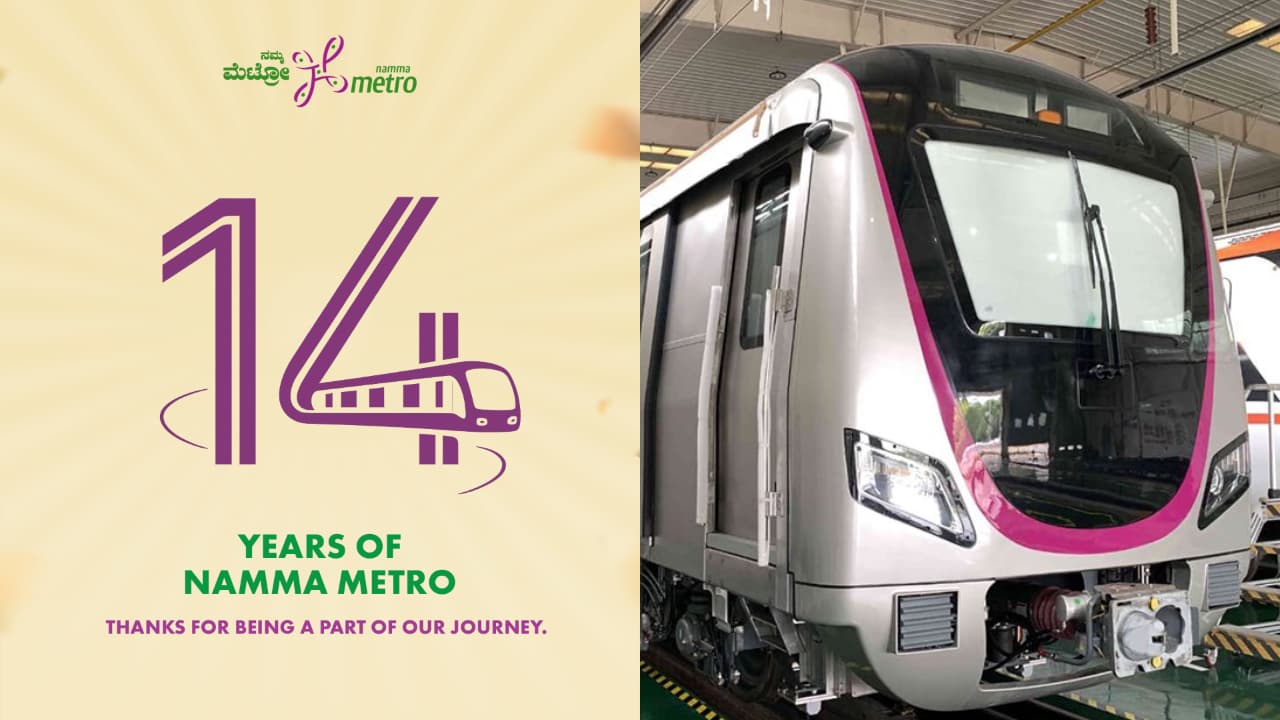Namma Metro celebrates 14 years of transforming Bengaluru’s urban transport. From its initial 6 km Purple Line, the network has expanded to 97 km, connecting East-West, North-South, and Yellow Line corridors, easing commutes.
Bengaluru: The Bengaluru Metro, popularly known as Namma Metro, has over the years transformed urban transport in the Silicon City. Providing fast, reliable, and eco-friendly travel, it has eased daily commutes, reduced traffic congestion, and become an essential part of city life. It seamlessly connects workplaces, schools, shopping hubs, and tourist destinations, making travel across Bengaluru more efficient, safe, and sustainable.
Early Beginnings: Laying the Foundation
The foundation stone of Bengaluru Metro was laid on 24 June 2006 by then Prime Minister Dr Manmohan Singh. Civil works commenced on 15 April 2007, marking the start of what would become a transformative urban transport initiative. The project was envisioned to provide safe, fast, and environmentally sustainable commuting options for Bengaluru’s growing population.
First Metro Run: Public Acclaim and Records
On 20 October 2011, the first Purple Line metro service was inaugurated on the MG Road–Baiyappanahalli route. The launch was met with immense public enthusiasm. Within the first three days, 1,69,019 passengers travelled by metro, surpassing 2 lakh passengers by the fourth day, and within just 12 days, over one crore people had used the metro, setting a record at the time.
Purple Line Begins With Six Stations
The initial Purple Line spanned 6 kilometres and served six stations:
- MG Road
- Trinity
- Halasuru
- Indiranagar
- Swami Vivekananda Road
- Baiyappanahalli
This phase marked a new chapter in Bengaluru’s public transport, laying the foundation for a citywide metro network.
Expanded Network: East-West, North-South, and Yellow Line
Namma Metro now operates on a total of 97 km, connecting key parts of the city:
- East-West Corridor (43.49 km): From Whitefield (Kadugodi) in the east to Challaghatta Terminal in the west.
- North-South Corridor (33.5 km): From Madavara in the north to Silk Institute in the south.
- Yellow Line (19.75 km): From RV Road to Delta Electronics, Bommasandra.
Bengaluru Metro is also the first metro project in India commissioned with 750V DC Third Rail Traction on Standard Gauge, a pioneering feat in urban transport.
Bengaluru Metro: Civic Pride and Sustainable Transport
Namma Metro is celebrated not only for convenience but also for its eco-friendly and urban development contributions. By promoting clean energy use, reducing air pollution, and improving connectivity, it has earned the trust and admiration of Bengaluru residents. With continued expansion of the Purple, Green, and Pink Lines, the metro promises a brighter and faster transport future.
2006 Dream – 2011 Start – 2025 Expansion
Over 14 years, Namma Metro has reshaped commuting patterns, time management, and city life. The Metro Rail Corporation (BMRCL) expressed gratitude:
“Our heartfelt thanks to all commuters for being part of this incredible 14 years of Namma Metro’s journey. Thank you for riding with us.”
Scroll to load tweet…
As it continues to grow, Namma Metro stands as a symbol of Bengaluru’s progress, innovation, and commitment to sustainable urban living.
